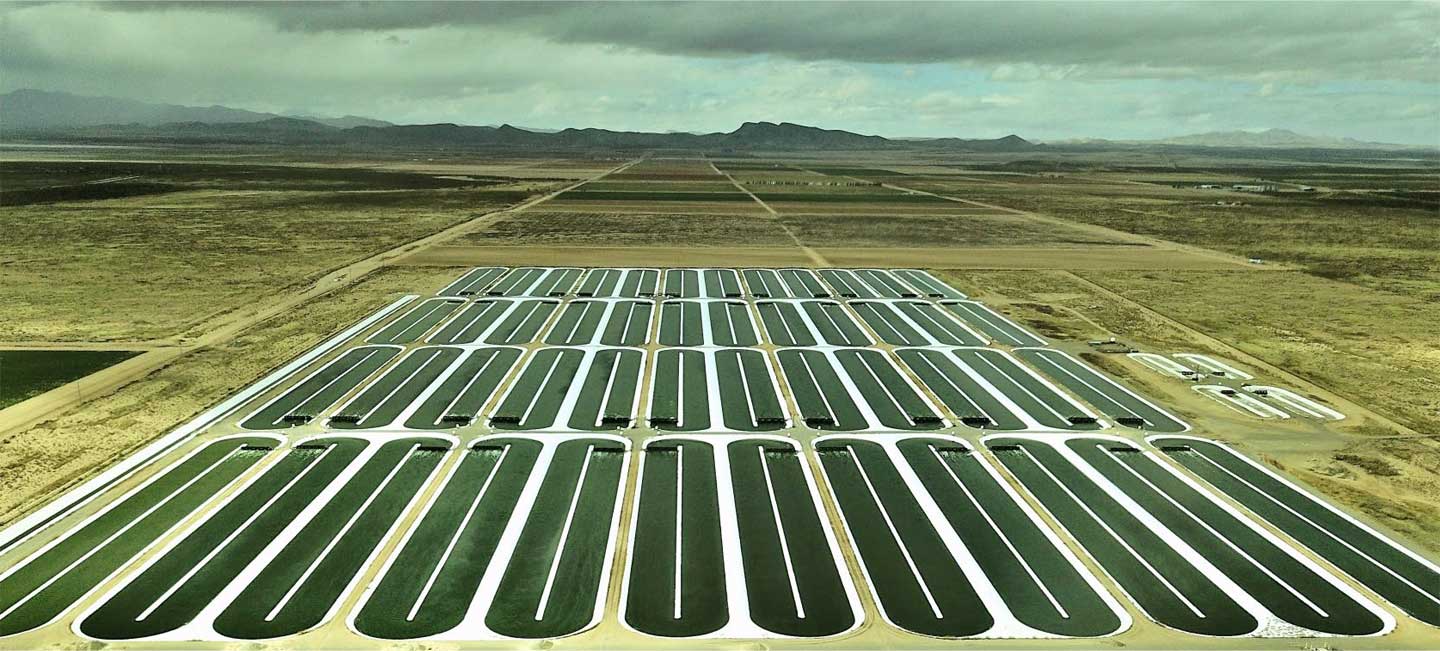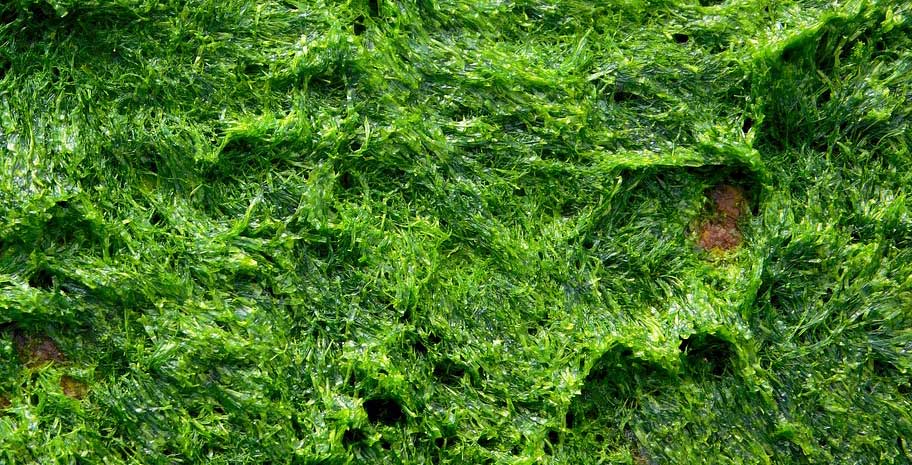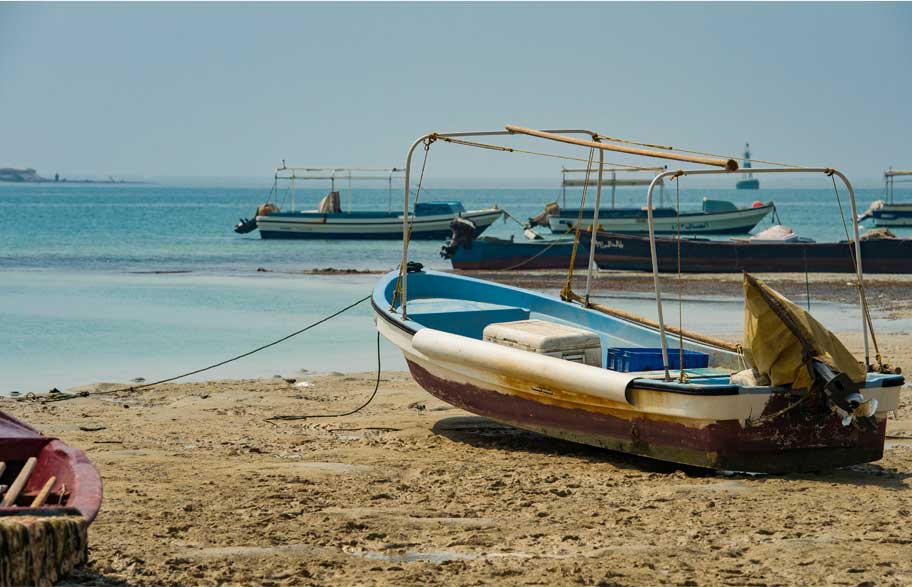An ocean plant with hidden depths
Microalgae grown in wastewater or seawater can be used to create lower-carbon fuels.

- Simple algal organisms produce biomass that can be harvested and transformed into fuels and other products
- Early research indicates microalgae can produce thousands of novel compounds, with hundreds of thousands of species still to be studied
- Aramco has produced its first batch of biocrude from algae and is exploring other applications for algal biomass, such as animal feed and use in operations such as drilling
The Aztecs used to eat them, while the ancient Chinese believed algae could cure almost any illness. Now microalgae are proving to be a potentially significant source of energy, and could have an important role to play in supporting the transition to a lower-carbon future.
Microalgae are among the world’s tiniest plants, but these free-floating organisms without roots or leaves produce more than half of the oxygen we breathe, as well as a host of bioactive compounds. Scientists estimate that we’ve so far only studied about 50,000 of a potential 200,000 to 800,000 microalgae species believed to exist. But research has already revealed over 15,000 novel compounds, ranging from fatty acids and enzymes to polymers and sterols, many with potential beneficial applications in health and beyond.
New energy source
Microalgae don’t just open new horizons in nutrition and medicine. Experts are also excited about the potential these microscopic organisms hold for use as biomass, which can be converted into products such as biofuel, animal feed, and pharmaceuticals. Their simple tissue structure makes them very efficient: they turn sunlight into chemical energy faster than most other plants, doubling their body size each day.

Microalgae's simple structure makes them very efficient, enabling them to turn sunlight into chemical energy faster than most other plants.
Interest in algal biomass — to use as a source of food or energy — goes back more than five decades, and algae research activities have increased over the years. Growing fuel in algae soup might sound futuristic, but it’s just an issue of timing. The world’s oil and gas resources are derived from the remains of marine organisms from millions of years ago, including algae, which formed organic hydrocarbons.
Now, we can bypass this eons-long process by growing and extracting biomass — and do so in some unexpected areas of the world where little else thrives.
At Aramco, we have been carrying out extensive research into the potential of algae-based biofuel, and already produced the first batch of biocrude from microalgae. Our efforts are part of a wider exploration of how we can make more use of nature-based solutions to emissions management and mitigation in our operations.
A helping hand for nature
Microalgae grow everywhere, in both fresh and salt water. One organism’s waste is another’s nourishment, so they often thrive in wastewater that would otherwise need to be treated before it could be re-used. These organisms can also help purify wastewater — acting as a biological remediation agent that can remove pollutants or contaminants from the water.

These organisms act as a biological remediation agent that can remove pollutants or contaminants from wastewater.
Industrial by-products such as nitrogen oxides and carbon dioxide only encourage the growth of microalgae. Ponds of wastewater can serve as nurseries for huge volumes of these organisms — which can in turn help reduce industrial emissions. Inside such nurseries, the algae use nitrogen as fertilizer and utilize energy from sunlight to capture and sequester carbon dioxide during photosynthesis. As the microalgae grow, they also release oxygen into the atmosphere.
Algae on location
Saudi Arabia’s geographic suitability and existing resources for microalgae cultivation led us to look further into the exciting potential of this resource.
Though microalgae can grow anywhere there is water and sunlight, some locations are better than others for industrial-scale production. Parts of Saudi Arabia, such as the Eastern Province, are particularly fruitful, as they offer an abundance of saline water, warmth, and sunshine most of the year.
There is also great potential to increase production in the region, thanks to the huge sabkha, or salt flats, along the Arabian Gulf coast that can be converted into algae ponds. Where these sabkha are close to industrial facilities, including our plants in Qurayyah, Qatif, and Ras Tanura, captured CO2 emissions from these production sites can be used to increase microalgae productivity.

Saudi Arabia's Eastern Province offers an abundance of saline water and sunshine most of the year, which makes it a fruitful location for industrial-scale production of microalgae.
How Aramco’s work has developed
In 2021, we set up the first field-based microalgae testing facility in Saudi Arabia. Here, we have been exploring the potential of a new algae-based biofuel and looking at other possible uses for the algae biomass, including animal feed and more-sustainable forms of fertilizers and inputs for green concrete.
In 2021, the facility produced the first batch of Aramco biocrude from microalgae. This can be mixed with other oils and fuels to produce lower carbon biofuels — which can be used as transportation fuels, as well as in heating systems, and electric energy generation.
“The first batch is being used for specialist testing, but we hope that the process can be scaled up and perfected to ensure that biocrude from algae is a part of our future energy mix,” says Naif Alabdullatif, the project manager of Aramco’s microalgae exploration project.
The pilot project has also produced other discoveries about this valuable resource, with scientists at the facility studying variations in microalgae growth across different years and seasons, and the capacity of different species of microalgae to sequester carbon dioxide.
Aramco’s Qurayyah Sea Water Injection Plant, which pumps water into the rocks below reserves to enhance oil recovery, is also close to areas of sabkha and as such is able to play an important role in the creation of these microalgae. The largest sea water injection facility of its kind in the world, it enables Aramco to pipe seawater deep into the desert to create new ponds to grow algae.
Full steam ahead
We are exploring how algae-based products could potentially be used in our Upstream operations, including drilling. For example, we’re exploring ways to convert algal biocrude into drilling fluids, such as oil-based muds. At the same time, algae could improve the unique habitats around the sabkhas. It acts as a good source of fertilizer for mangrove trees, which line the Arabian Gulf and extend into temperate latitudes, serving as vast natural carbon sinks.
“Microalgae are just one strand of our strategy to maximize natural solutions, and we still have a lot to discover about how big a role microalgae can play in the global energy transition. But there’s something exciting about the fact that the same organisms that produced our hydrocarbons could now yield a lower-carbon fuel in real time,” says Thamer Mutairi, who leads Aramco’s green energy program, which includes the Company’s extensive research into microalgae.
More from Elements
The material in this article is intended to be for general informational purposes only, and readers should not place undue reliance on the statements or opinions therein. Any information provided speaks only as of the date this content was published and Saudi Aramco undertakes no obligation to correct, update, or revise any statements or opinions made in or implied by this article.



